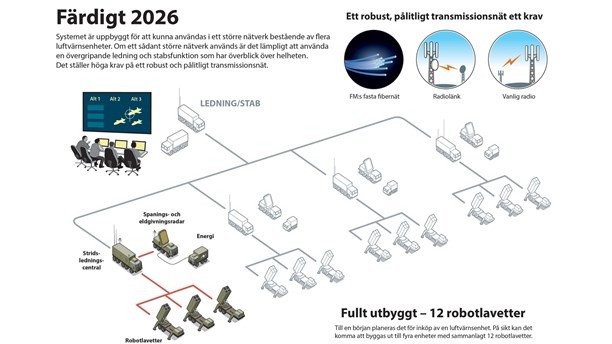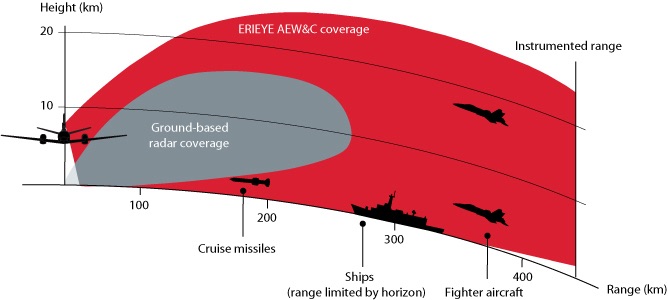There are 18 nations worldwide that have or are in the process of acquiring Patriot today, and the number of user countries in Europe has doubled in 5-6 years. I addition, in Europe both France and Italy have deployed the european counterpart to Patriot; the SAMP/T system. In the Nordics Finland is acquiring the Israeli/US made David’s Sling system, while Sweden is among the many Patriot-user countries, and Norway is still only considering this class of weapon system.

In light of this, this blog post will try to answer the following questions.
- What are the core benefits of long-range air and missile defenses?
- What are the core down-sides of such systems?
- What compromises and trade-offs in the overall air defense of a country must potential buyers with limited resources make, if quite a large percentage of allocated budgets is to be spent on the long-range capability?
Long-range air defense benefits
Compared with medium- and short-range systems a modern long-range system often bring more benefit in scenarios with ballistic short to medium range missiles/rockets, high altitude/stand-off precision bombing and other stand-off platforms for intelligence, reconnaissance and surveillance. Weapons with ballistic profiles can be shot down, bombers are forced to fly around or under, and aircraft and drones with stand-off missions are kept even further away from the battlefield/airport/defended area. Furthermore, in order to accomplish this, modern long-range systems utilize sophisticated radar and missile technology significantly driving the cost per unit up. The most expensive system of this class is the Patriot air and missile defense system, where one battery with engagement radar and the latest set of hit-to-kill missiles amounts to more than one billion US dollars. This according to a December 16, 2022, Center for Strategic and International Studies (CSIS) article.
The down-sides of long-range systems
Long-range air defense systems are, without exception, dependent on radar to accomplish their mission. Evidently, in order to be able to intercept, the targets are required to fly within the coverage area of these systems’ radars. Any target that either is above or outside of the system radar coverage is consequently flying without impunity. However, a more subtle added feature is that this also apply to targets flying below what’s called the radar horizon. At range the earth’s curvature allow low flying targets to evade radar detection. So put simply, low flying targets can be as safe as targets at altitudes above or outside of maximum coverage.
What distances and flight altitudes are we talking about? Example; an aircraft at 500 feet is below the horizon of a radar at a height of 5 m, until it is within a distance of approx. 60 km. A quadrupling of the radar’s height above ground in the same scenario unfortunately only gives a relatively small increase, barely 10 km extra, i.e. a theoretical detection range of 70 km for a target at 500 feet.
Targets are just as safe below the radar horizon as they are at altitudes above maximum air defense coverage.
norskluftvern.com
If the engagement radar of a long-range system can see targets out to 150 km, and the missile reach is 75% of this, we realize that a typical long-range system is not particularly more long-range than other systems at lower altitudes, simply due to the limitations from the radar horizon.

Elevated sensors can be a measure to reduce challenges with detection and target tracking in a scenario with low-flying targets. Compared to sensors in aircraft, balloons with sensors and connections have a built-in ability to maintain higher air surveillance readiness over a longer period of time.
The American program to develop an aerostat «JLENS» realized this a long time ago. However, since its inception, which is at least since 1998, this aerostat project has been plagued by technological challenges, budget cuts, and accidents during field testing.

The arguments for an alternative approach
An alternative approach to the costly long-range systems, is the lighter, less sophisticated classes of medium ranged ground based air defense missile systems. These are more affordable systems, that could be acquired in larger numbers. Thus enabling point air defense of a greater number of objects against low altitude targets, as compared to what a relatively few heavy long-range systems could do.
It is fair to underline here that there are target sets that only the modern long-range systems can defend against, and leaving the door open so to speak in this respect, does not come without risk.
However, it is this blog’s opinion that a balanced approach to the air defense problem should take the following points into consideration:
1) A distributed network of mobile and fixed passive and active sensors: including sensors on land, on ships, on satellites, and on drones.
2) Acquisition of more and affordable short-range and medium-range air defense and missile defense systems.
3) High-energy weapons, laser cannons, and jammers around important targets as an additional line of defense in addition to classic point defense air defense.
4) Robust command and control systems that can aggregate data from many systems, including those of allies, and ensure effective use of air defense and missile defense.
5) Passive defense of forces and facilities: including camouflage, concealment, and deception measures, as well as fortification and the ability to reorganize and repair to make it difficult for the enemy to choose targets and to ensure that one’s own forces are able to maintain combat effectiveness throughout the course of the battle.
These measures would create a robust foundation for a bread & butter ground based air defense capacity, in which a more sophisticated and expensive and thinner layer of long-range and missile defense capability could contribute.


